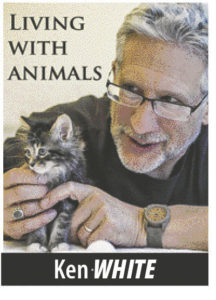I grew up in 1950s-60s Brooklyn, long before the place became trendy. I also grew up with a mother who felt cleanliness was two notches above godliness, which meant no pets (along with raking the shag rug, and clear plastic covers over the upholstered furniture). Without a pet to love I was drawn to the native avian fauna (also known as pigeons), eventually exacting mom’s promise that I could keep whatever pigeon I could catch. I honestly can’t imagine how I got my hands on a fishing net (it’s not like ours was a family to go fishing, or even outdoors) and I know I stole the metal milk crate (bird cage) from the local Bohack’s Supermarket. Even so well equipped, the magically iridescent plentiful pigeons of Flatbush Avenue proved themselves safe from my best bird catching techniques.
I’ve admired the beauty, enjoyed the gentle sounds, been impressed by the courtship rituals of and been pooped on by plenty of pigeons over the decades. As a fan, I bristle over the term “sky rat” and much prefer “urban dove.” Who are these omnipresent animals?
Over three hundred species of pigeons and doves constitute the family Columbiformes. All of them excellent long distance travelers who navigate by the position of the sun and Earth’s magnetic field, these birds have lived alongside people for thousands of years. They are actually very clean animals and there’s scant evidence that they are significant disease transmitters. Fellow members of the pigeon fan club include Charles Darwin and Nikola Tesla (who wrote of a favorite, “As long as I had her, there was a purpose in my life.”) They are also intelligent animals, with current research indicating they have an understanding of such abstracts as space and time. The U.S. deployed 200,000 pigeons during WWII credited with saving thousands of soldiers, and in one recent study pigeons proved 99% accurate in distinguishing images of malignant from benign tumors. One of that study’s authors wrote in Scientific American: “I don’t anticipate that pigeons, no matter how good they become at pathology or radiology, will be playing a role in actual patient care – certainly for the foreseeable future.” All I wanted was one to love.

